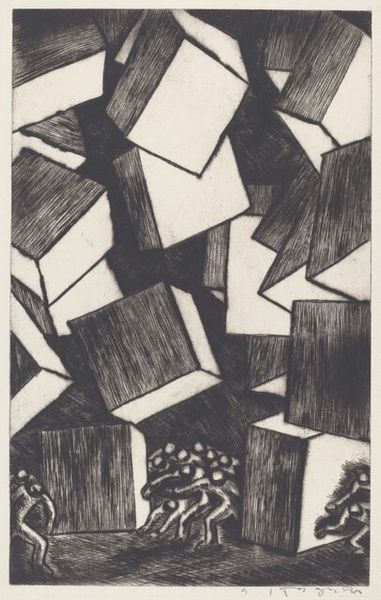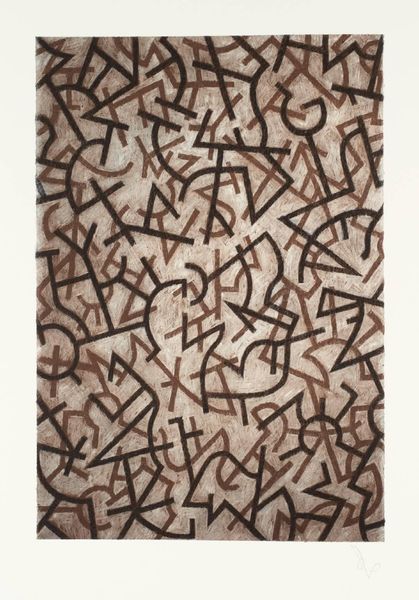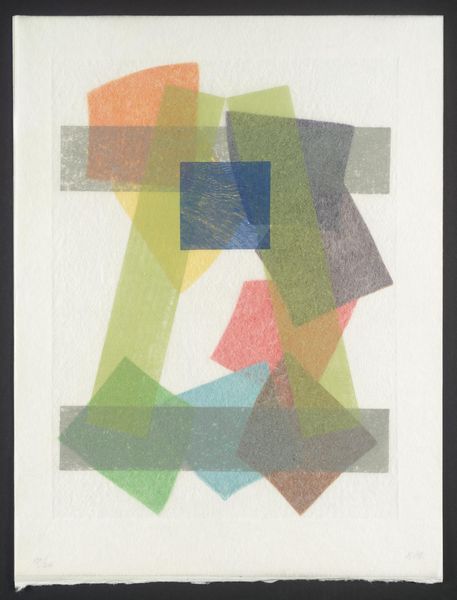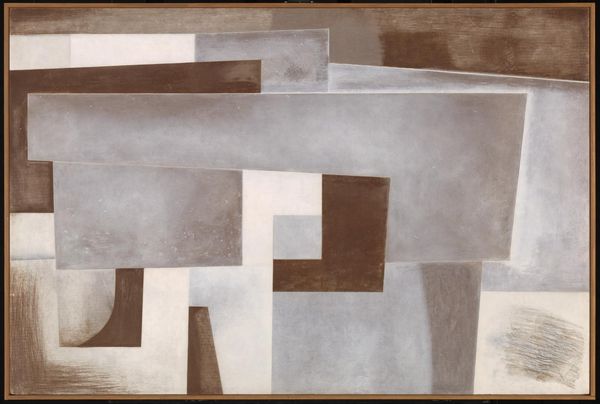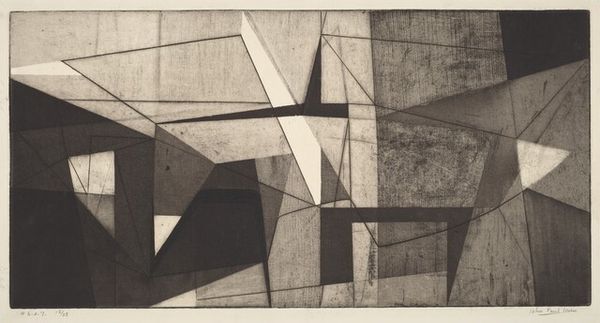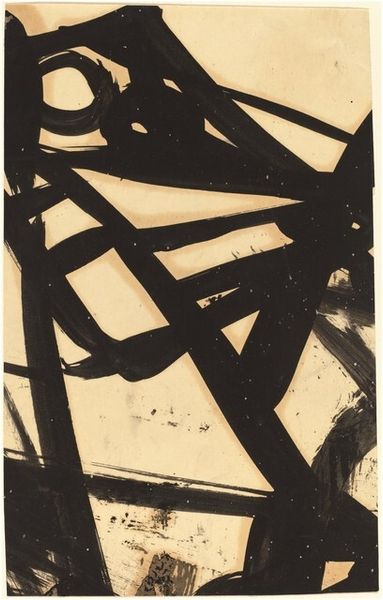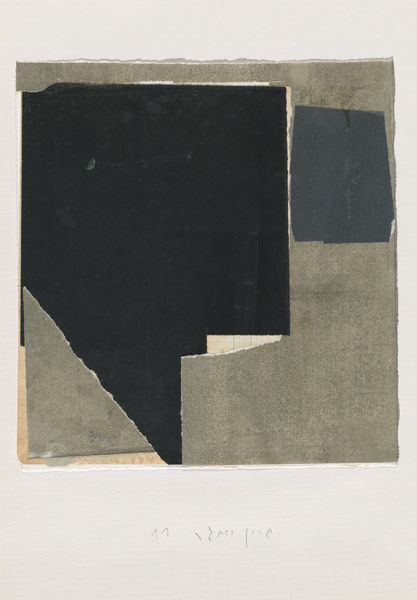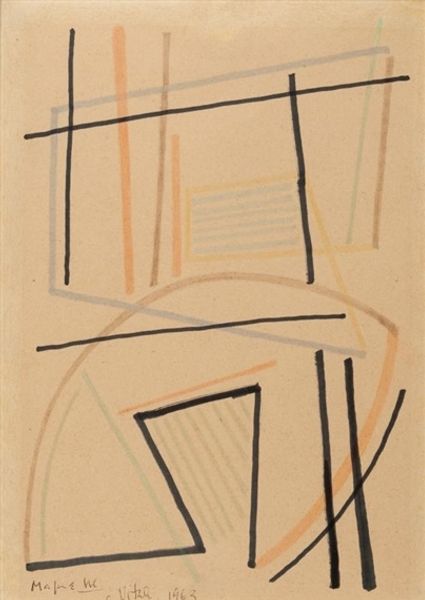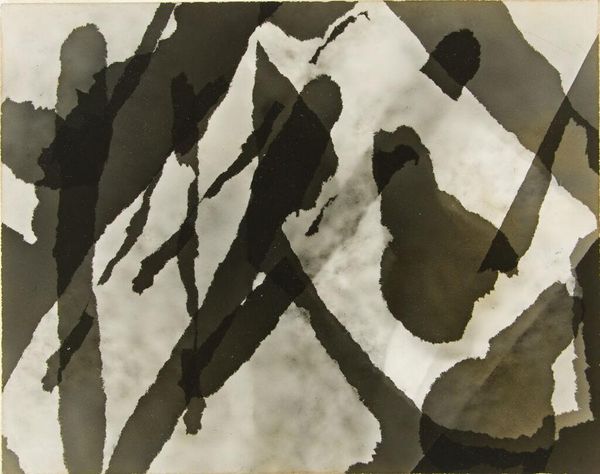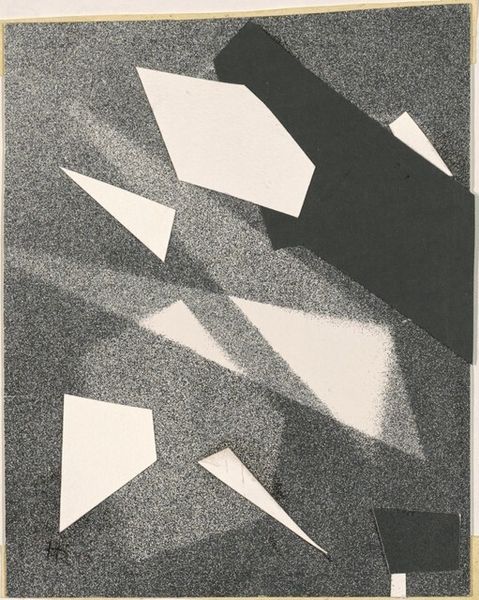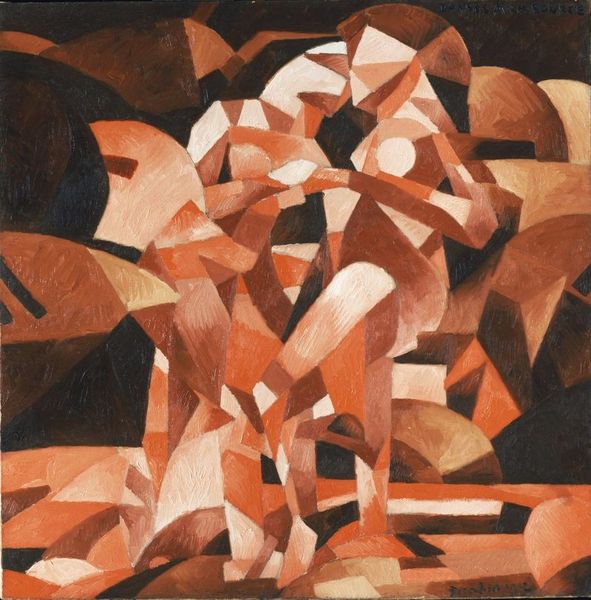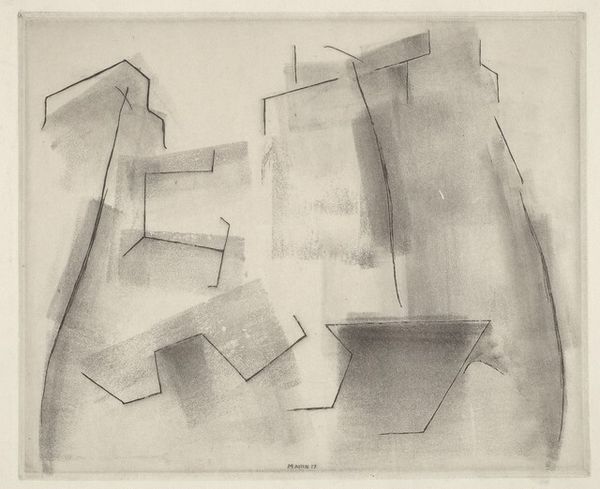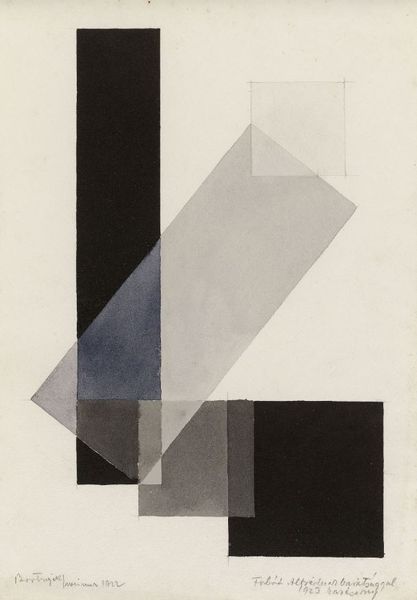
mixed-media
#
abstract-expressionism
#
mixed-media
#
pattern
#
geometric
#
abstraction
Copyright: Hans Richter,Fair Use
Editor: So, this is "Abstract Composition" by Hans Richter. No specific date is listed. It’s mixed media and strikes me as having a kind of austere beauty because of its grey tones. What catches your eye about it? Curator: I’m immediately drawn to the recurring shape – it almost looks like a stylized axe or perhaps a cross that's been fractured. Do you see how that form, repeated and layered, creates a sense of disruption but also visual unity? Richter’s consistent use of symbols pulls us back to different eras. Editor: A fractured cross, that’s interesting. I see the repetition but hadn't thought about it having such loaded symbolic value. How might that play into the work as a whole? Curator: Well, think about the early 20th century when Richter was active. The rise of abstraction coincided with immense social and political upheaval. The traditional meanings, especially those tied to religion and nationhood, were being questioned, fragmented, much like the shapes we see here. Could it represent a break from older belief systems? Editor: That makes sense. It definitely gives it more depth than just a pretty pattern. But what about the greyscale palette? Does that add another layer of meaning? Curator: Absolutely. The monochromatic tones can evoke a sense of melancholy, even detachment. The absence of bright colours may underscore the idea of loss or perhaps the fading of established structures, emphasizing a state of cultural uncertainty, perhaps even searching. Is Richter searching, do you think? Editor: It’s certainly thought-provoking to think about these geometric shapes as carrying such weight. Thanks! Curator: Indeed, recognizing familiar symbols—and how they are altered or repurposed—allows us to unlock narratives embedded within even the most abstract art. I think Richter is saying more than he thought!
Comments
No comments
Be the first to comment and join the conversation on the ultimate creative platform.
